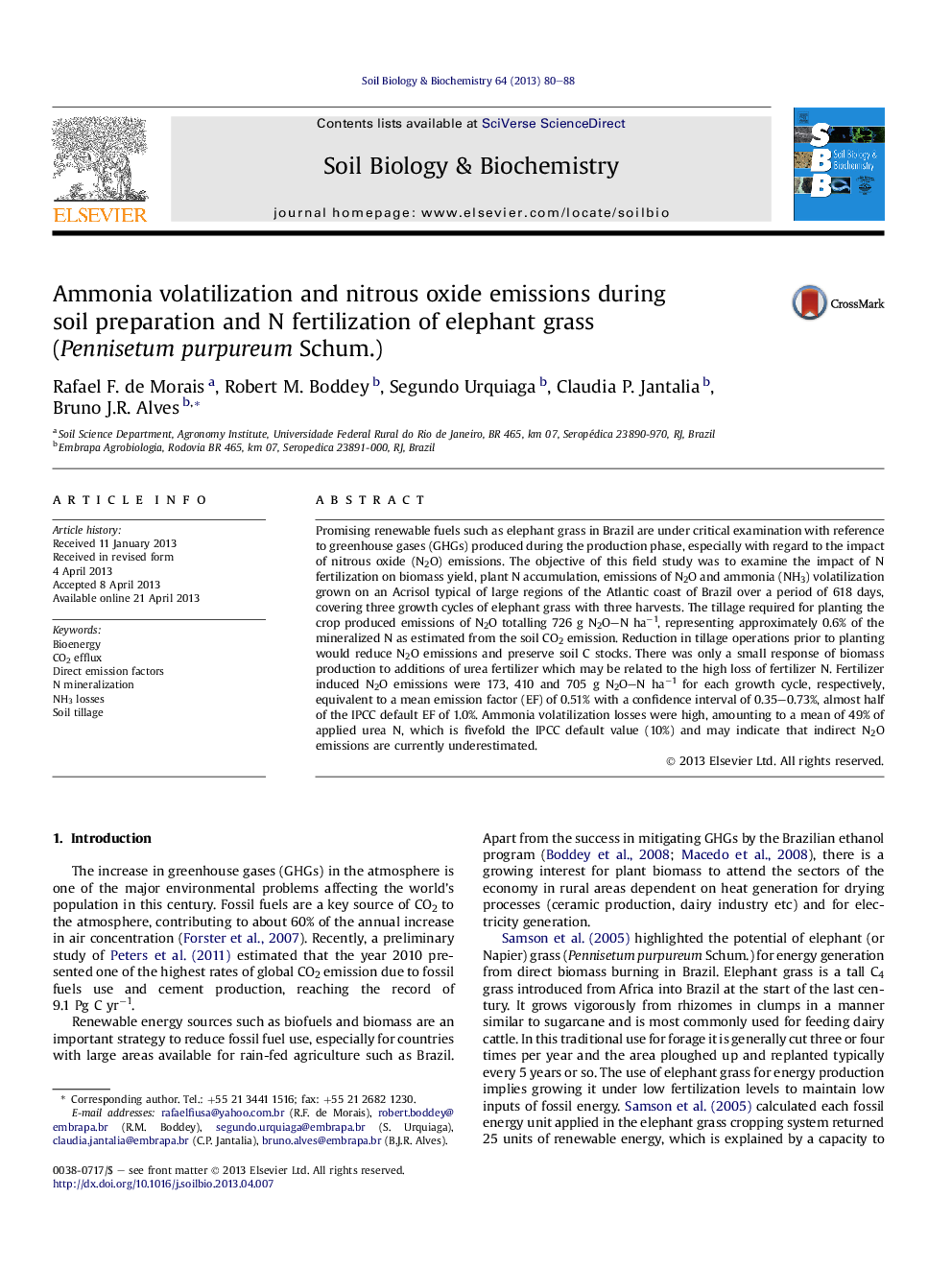| Article ID | Journal | Published Year | Pages | File Type |
|---|---|---|---|---|
| 2024765 | Soil Biology and Biochemistry | 2013 | 9 Pages |
•CO2 and N losses after tillage and N fertilization of elephant grass were assessed.•The proportions of fertilizer N emitted as N2O and NH3 were estimated.•Soil tillage stimulated soil C losses and induced N2O emissions.•Direct N2O–N emission factor due to N fertilization was half of the IPCC default.•Volatilized NH3–N was five times the IPCC default.
Promising renewable fuels such as elephant grass in Brazil are under critical examination with reference to greenhouse gases (GHGs) produced during the production phase, especially with regard to the impact of nitrous oxide (N2O) emissions. The objective of this field study was to examine the impact of N fertilization on biomass yield, plant N accumulation, emissions of N2O and ammonia (NH3) volatilization grown on an Acrisol typical of large regions of the Atlantic coast of Brazil over a period of 618 days, covering three growth cycles of elephant grass with three harvests. The tillage required for planting the crop produced emissions of N2O totalling 726 g N2O–N ha−1, representing approximately 0.6% of the mineralized N as estimated from the soil CO2 emission. Reduction in tillage operations prior to planting would reduce N2O emissions and preserve soil C stocks. There was only a small response of biomass production to additions of urea fertilizer which may be related to the high loss of fertilizer N. Fertilizer induced N2O emissions were 173, 410 and 705 g N2O–N ha−1 for each growth cycle, respectively, equivalent to a mean emission factor (EF) of 0.51% with a confidence interval of 0.35–0.73%, almost half of the IPCC default EF of 1.0%. Ammonia volatilization losses were high, amounting to a mean of 49% of applied urea N, which is fivefold the IPCC default value (10%) and may indicate that indirect N2O emissions are currently underestimated.
